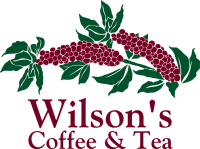Sumatra Lychee Coferment
A Limited Edition Coffee
Light Roast
$18 for 1 half pound of whole bean roasted coffee.
An anaerobic lychee cofermentation that occurs prior to wet hulling gives this coffee a delightful sweetness and clarity often missing from Sumatran coffees. Roasted light to balance the unique character of this coffee with a smooth medium-heavy body. We're only packing this in half pound bags, so if you want a full pound, be sure to order 2 bags.
Roasting Notes
This is a coffee that's in some ways unlike anything we've roasted. Even the unroasted coffee carries a distinct fragrance and this carries through to the roasted coffee even at extremely dark roasts. We've never carried a coferment coffee before, so this was a good opportunity to learn how this experimental processing method affects the flavor of the coffee and how that can be expressed in the roast.
Our supplier for this coffee had a set of roasting notes and one of the machines that they use for that is very closely aligned with our production roaster, but the usefulness of these notes is fairly limited in that they read like someone with a great deal of experience took a guess and is reporting the results of that singular roast. Furthermore, that single choice of roast is very close to what we consider a lightest palatable roast where any lighter and the coffee will always have a particular kind of raw coffee flavor that we would rather not be present in the cup.
For product development here, we're far more interested in how the coffee changes across a range of roast levels. There are companies that only do very light roasts who assert that this best represents the true character of the coffee. There are companies that only do darker roasts who assert that this results in a richer, more flavorful brew. The truth is that there are coffees to support both of these perspectives, but neither is generally true. Selecting an approach to roasting a particular coffee is all about navigating complex flavor transformations and trying to find delicious results within what can be a vast range of possibilities where every coffee can present a unique character.
Still, a light roast with extended time in a range that tends to emphasize sweetness seemed like a credible choice in the absense of personal experience with similar coffees so we wanted to see how we liked something similar. As always, we run a tiny batch through our profiling lab roaster, pulling enough coffee to make a single cup at several potential end points. For this coffee, we tried 15 different roast leveles and 9 of these are ones that I would consider to be light roasts. We also ran this as dark as our darkest roasts because once you're taking an approach like this to designing a roasting plan there's little reason not to just keep going and try the coffee darker.
Cup 1: This is the lightest we would ever want to roast a coffee and with this coffee the result is not great. Too light.
Cup 2: This is a good match to our supplier's example roast. It's a good and credible choice, but some of the unique characteristics of this coffee are presented at greater intensity on darker cups. There's also a slight sourness that detracts from the sweeter elements we'd prefer to highlight.
Cup 4: This is similar in roast level but a bit slower than the specification for our standard cupping roast that we use when evaluating coffees we might want to purchase or to confirm that a coffee satisfies a contract. Here the coffee is mild and effervescent with a medium heavy body that's challenging to evaluate properly because within the flavor context it seems as though the body ought to be a bit thinner than it is.
Cup 5: Very similar to cups 4 and 6, but with less interesting aromatics.
Cup 6: Some of the weirder attributes of this coffee are subdued and what remains is an incredibly smooth brew that still preserves the best parts of the flavor. This is right in the center of the range where we'd expect to find delicious light roasts.
Cups 8-10: The unique flavor characteristics of this coffee are more subdued, but the body is heavier. Cup 10 is at the start of the range where I'd consider the coffee to have a medium roast level.
Cup 13: This was the best of the cups in the dark roast range. It's not particularly interesting on the first sip and it's inoffensive when fully cooled, but there is a narrow window of excellence when the coffee is half cooled where everything that's good about this coffee combines with dark roast characteristics in a way that is delightful, though fleeting.
Having chosen to replicate the results of cup 6, we roasted our production test batch and brewed an auto drip pot to try this in a way most of our customers are likely to enjoy. The results were exactly as expected.
